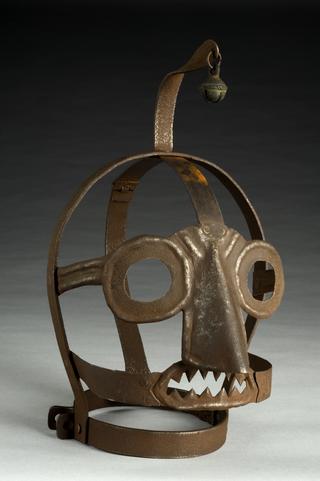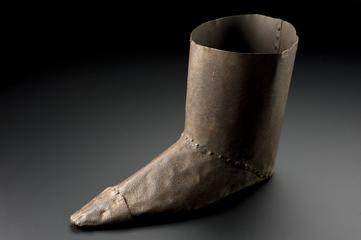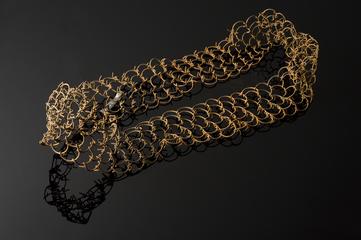






Iron full face mask (sōmen) with prominent nose piece, moulded eyebrows and furrowed brow, Japanese, Edo period, 1600-1900
From armour to religious rituals and dance theatre, masks play a central role in traditional Japanese culture. Samurai warriors used masks to protect their faces and help secure their heavy helmets (kabuto). This expressive example is known as sōmen or full-length mask. Particular to the peaceful Edo period (1603 – 1868), they were more theatrical than their half-length counterparts (menpō). Makers took inspiration from folklore and religious iconography to create fierce or comical facial features. The beaklike nose piece on this mask suggests it is a tengu, a mischievous legendary being in Shinto belief often depicted as part bird and part human.
This object was purchased on behalf of Sir Henry Wellcome from Glendining auction house in September 1932. The sales catalogue described it as an 'Early Elizabethan executioner's mask'.
Details
- Category:
- Wellcome (general)
- Collection:
- Sir Henry Wellcome's Museum Collection
- Object Number:
- A129822
- Materials:
- iron
- Measurements:
-
overall: 220 mm x 180 mm x 180 mm, 2.14kg
overall (including plinth): 230 mm x 180 mm x 220 mm, 2.14 kg
- type:
- mask
- credit:
- Glendining




